If a new rigging trainee is told “the lower the sling angle, the greater the tension within the sling legs”, it's pretty important that they remember.
Why is it important?
Well, as sling angles change from vertical to 30° the tension imposed on the sling doubles.
If a rigger were to casually lower the sling angle to gain additional headroom without considering the change in horizontal tension you could have an extremely dangerous situation on your hands.
At ITI our instructors know that sometimes seeing is believing. Fortunately we have a way for the doubters among us to see this in action without watching the catastrophic rigging failure that could come from an uninformed rigger hastily lowering sling angle.
Using an overhead crane, a tension beam with adjustable rigging connection points, two chain hoists, and three dynamometers ITI Technical Director, Joe Kuzar, recently demonstrated the increased tension brought on by decreased sling angle.
Beginning with the chain slings at approx. 60 degrees you will see that the weight of the tension beam and the rigging is 1,075 lbs. You will also see that the legs are experiencing 620 and 625 lbs. of tension respectively.
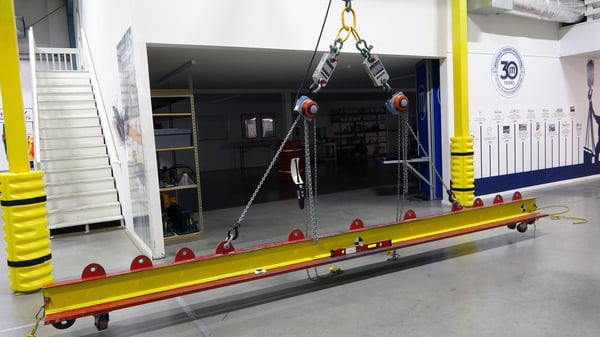
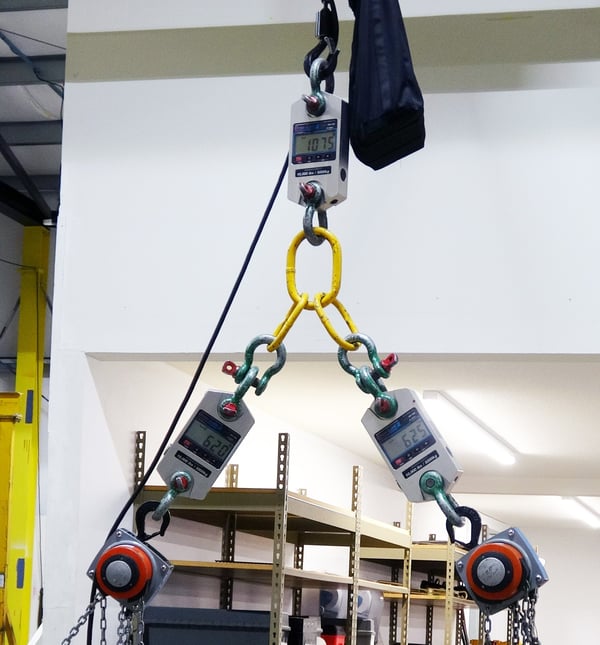
Next, Joe adjusted the sling angle to approx. 45 degrees. The load weight remains at 1,075 lbs, but the legs are now experiencing 710 and 725 lbs. of tension.
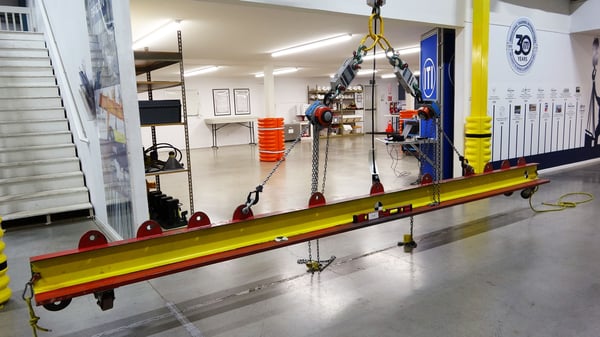
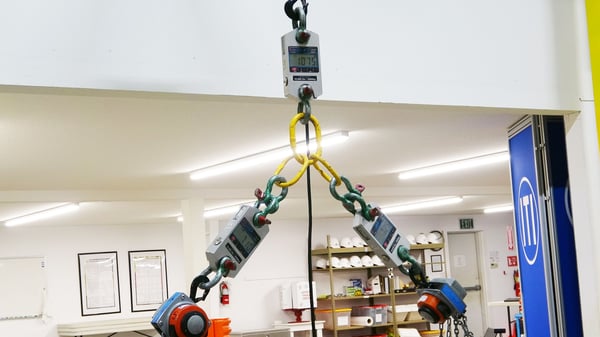
Finally, Joe adjusted the sling angle to near 30 degrees. With the total load weight at 1,075 lbs each sling is experiencing 955 and 960 lbs of tension!
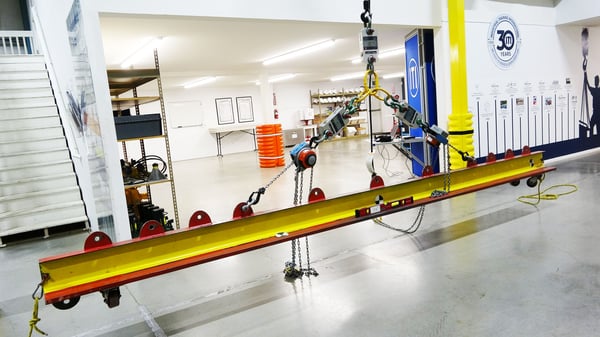
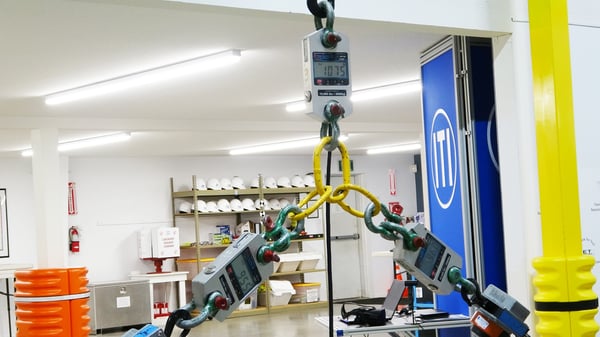
When you attend a training through ITI you are not simply shown a list of rules and regulations and told to follow them blindly. On the contrary, ITI students are lead by industry professionals who explain the “how” and “why” behind the crane, rigging, and lift planning topics covered in ITI curriculum. In addition, ITI students get to experience the concepts through hands on experiences like the one in this post.
ITI open enrollment training center courses containing learning modules that cover sling angle include Intermediate Rigging and Master Rigger.
Two-day Intermediate Rigging Course
- Load Weight Estimation

- Center of Gravity
- Rigging Inspection/Removal Criteria Basics
- Load Control
- Rigging Capacities
- Sling Angles & Tensions
- Horizontal Rigging
- Sling & Rigging Tensions
- Rigging Procedures
- Accident Case Studies
Four-day Master Rigger Course
- Covers all of the topics in the Intermediate Rigging Course
- Inclined Planes
- Rigging Block & Winch Systems
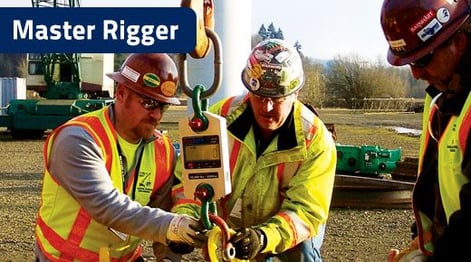
- Chain Fall Load Drifting
- Levers, Jacks and Rollers
- Spreader Bars
- Multiple Crane Lifts
- Off-Level Pick Points
- Multiple Hitch Systems
- Load Turning
- Load Moving Procedures
- Load Distribution
Click here to view a full list of upcoming ITI Training Center Courses!




COMMENTS